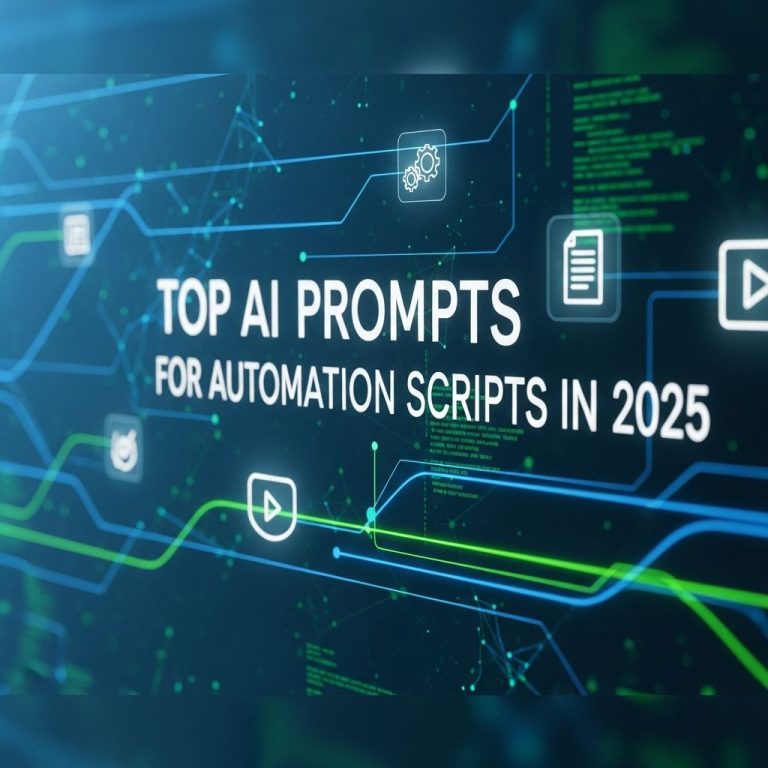In today’s fast-paced digital landscape, the efficiency of workflows directly correlates to the success of projects, especially in the realms of machine learning and artificial intelligence. As more organizations pivot towards data-driven decision-making, the need for robust and efficient Machine Learning Operations (MLOps) tools becomes paramount. This article delves into the innovative MLOps tools set to shape 2025 and how they can enhance your workflow.
Understanding MLOps
MLOps, a blend of Machine Learning and DevOps, is the practice of streamlining the process of taking machine learning models from development to production. It encompasses various phases including model development, deployment, maintenance, and monitoring. The objective is to automate and improve the continuous delivery of machine learning models, ensuring they are reliable, scalable, and easily reproducible.
Key Components of MLOps
- Version Control: Just like in traditional software engineering, version control for datasets and models is crucial.
- Continuous Integration/Continuous Deployment (CI/CD): This involves automating the building, testing, and deployment of ML models.
- Monitoring: Once deployed, models need constant monitoring to gauge performance and detect drift.
- Collaboration: MLOps fosters collaboration between data scientists, engineers, and business stakeholders.
The Evolution of MLOps Tools
Over the past few years, MLOps tools have evolved significantly, moving from niche solutions to comprehensive platforms that cater to various aspects of the machine learning lifecycle. As we head into 2025, several trends are shaping the development of these tools:
1. Increased Automation
Automation is at the forefront of MLOps. Tools that offer automated pipelines can help teams streamline their workflows. Some of the key features include:
- Automated data preprocessing
- Automated model selection
- Automated hyperparameter tuning
2. Enhanced Collaboration Features
The need for teams to work seamlessly across different functions has led to the development of collaborative MLOps tools. Features to look for include:
- Integrated communication channels
- Shared workspaces for storing notebooks and models
- Real-time progress tracking
3. Focus on Governance and Compliance
With the rise of regulations surrounding data privacy and ethical AI, MLOps tools are increasingly incorporating governance features. This includes:
| Feature | Description |
|---|---|
| Audit Trails | Track changes made to models and data for compliance purposes. |
| Data Privacy Controls | Ensure that all data used complies with local regulations. |
| Bias Detection | Tools that help identify and mitigate biased outcomes in models. |
Top MLOps Tools to Watch in 2025
As we move into 2025, several MLOps tools have emerged as leaders in the industry, offering a suite of features that cater to the diverse needs of data teams:
A. MLflow
MLflow is an open-source platform that manages the ML lifecycle, including experimentation, reproducibility, and deployment. Key features include:
- Experiment tracking
- Model registry
- Integration with various ML libraries
B. Kubeflow
Kubeflow is a popular platform for deploying machine learning workflows on Kubernetes. It excels in:
- Scalability
- Integration with cloud services
- Support for TensorFlow, PyTorch, and other frameworks
C. DataRobot
DataRobot focuses on automating the end-to-end machine learning process, making it suitable for businesses looking to leverage AI without deep expertise. Notable features include:
- AutoML capabilities
- Deployment options to cloud and on-premise
- Comprehensive model monitoring
Strategies for Implementing MLOps Tools
Implementing MLOps tools requires a considered approach. Here are some strategies to ensure a smooth integration into your workflow:
1. Assess Your Needs
Before selecting tools, evaluate your team’s specific needs. Consider the following:
- Current workflow challenges
- Team expertise
- Integration with existing tools
2. Start Small
Implement MLOps tools incrementally. Begin with a single team or project to gauge effectiveness before a wider rollout.
3. Invest in Training
Training your team on new tools is essential. Ensure everyone understands how to leverage the tools to their fullest potential.
Conclusion
As we approach 2025, incorporating MLOps tools into your workflow is not just a trend but a necessity for organizations aiming to remain competitive. By automating processes, enhancing collaboration, and ensuring compliance, these tools will empower teams to deliver high-quality machine learning models efficiently. Whether you’re a startup or an established enterprise, embracing MLOps will undoubtedly transform your approach to machine learning.
FAQ
What are MLOps tools and how do they enhance workflow?
MLOps tools facilitate collaboration between data scientists and operations teams, streamlining the process of deploying and maintaining machine learning models in production.
What are the key benefits of using MLOps tools in 2025?
In 2025, MLOps tools are expected to enhance automation, improve model monitoring, ensure compliance, and reduce the time to market for machine learning projects.
How do MLOps tools improve collaboration in machine learning projects?
MLOps tools provide shared platforms and standardized processes, enabling better communication and collaboration among team members, which leads to more efficient workflows.
What features should I look for in MLOps tools for 2025?
Key features to consider include model versioning, automated testing, CI/CD integrations, scalability, and robust monitoring and alerting systems.
Can MLOps tools help in managing model drift?
Yes, many MLOps tools come with built-in capabilities for monitoring model performance over time, helping teams detect and manage model drift effectively.




